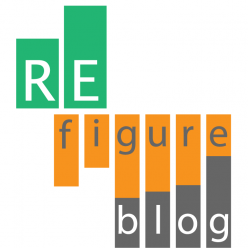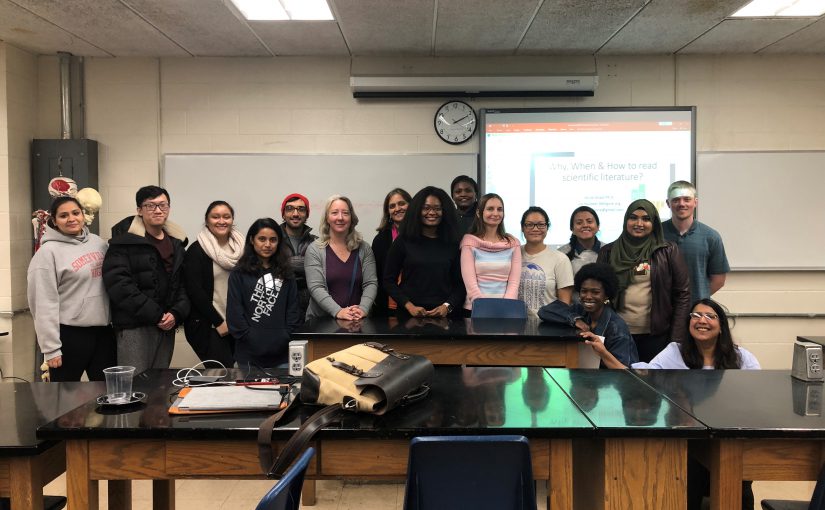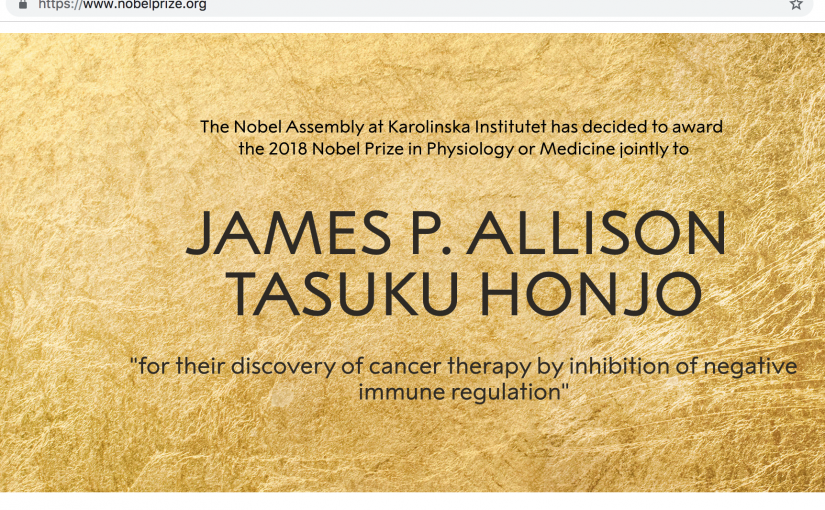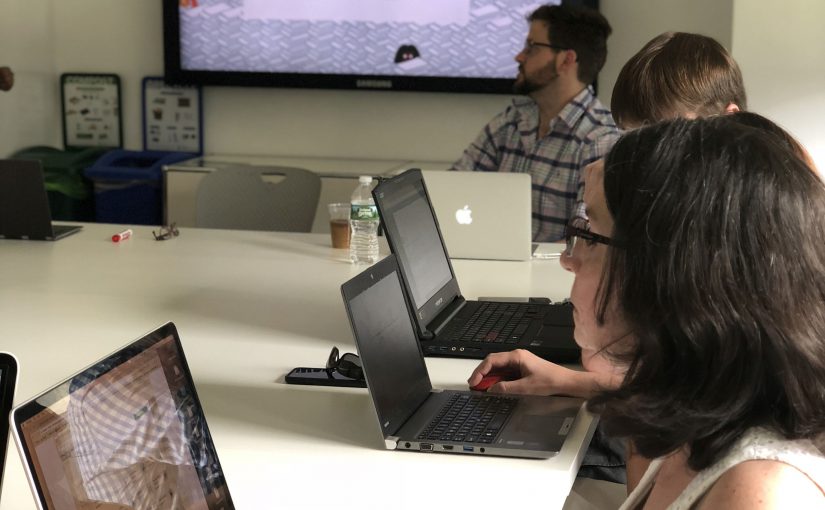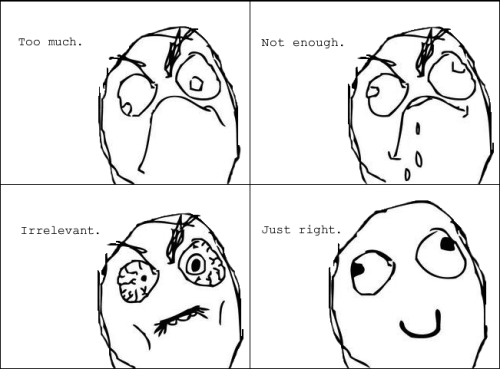The undergraduate course offered by ReFigure taught me a lot. First and foremost, I’ve learned to pay attention to figures in scientific articles and analyze the information reflected in figures and their corresponding legends. One piece of advice I constantly heard from college professors about reading the papers was: “Pay special attention to figures”. However, it was very easy to ignore that advice and slip into a habit of simply reading the article, trying to understand every single word and paying very little attention to figures. Continue reading Feedback on the ReFigure Undergraduate Course
Week 2: Let’s start reading papers and creating research outputs!
This is Week 2 of the ReFigure Undergraduate Research Course. Click for introduction and Week 1. As promised you are going to start diving into the topic of your choice and creating outputs that demonstrate your learning. This week’s video is great at explaining how to read papers and was made by Kishwaukee College Library. Continue reading Week 2: Let’s start reading papers and creating research outputs!
Week 1: Open Access and Introduction to Scientific Papers
These are the readings for the first week of the ReFigure Undergraduate Research Course. Continue reading Week 1: Open Access and Introduction to Scientific Papers
Free Course: find, read, share papers and conduct literature reviews
Welcome to the a free online course designed by ReFigure team for undergrads, masters and PhD students.
Learning objectives Continue reading Free Course: find, read, share papers and conduct literature reviews
Why, Where and How to read scientific literature
October 22-26 was the first statewide STEM week, to accelerate student engagement in science and technology. Bunker Hill Community College participated in STEM week with various presentations and demos to students.
ReFigure’s presentation was an introductory, interactive session to introduce Community College to scientific literature, new tools to make finding, reading scientific literature easy and finally to build an online presence by sharing scientitic news. Continue reading Why, Where and How to read scientific literature
Nobel Prize 2018 in Medicine, ReFigured
This is Nobel Prize week, and it was kicked off in the early hours of this morning with the announcement of James Allison and Tasuku Honjo receiving the award in medicine for advances in cancer immunotherapy. As a scientist, it is amazing to see basic discoveries in the laboratory lead to real impact in patients; it is what fuels my passion for science. Today, cancer immunotherapy has given hope to cancer patients and pushed technology (like CARTs and gene therapy) to new frontiers that will continue to pay dividends for years to come. While the current hot applications of these immunological findings are in cancer immunotherapy, no small part of the early discoveries were in the fields of autoimmunity and infectious disease. Here at ReFigure, I’ve created a collection of two early findings in the Allison and Honjo laboratories along the road to the clinic. See the ReFigure I created here: https://bit.ly/2xQ7cq7
In the first, we see the application of the anti-CTLA4 antibody in a mouse model of melanoma. In this experiment, the anti-tumor effect is shown to be modulated by specific subsets of T cells and is improved upon blocking CTLA-4. I know from my direct experience with this model, that 60% survival at 70 days post challenge is remarkable! Today, patients with anti-CTLA-4 therapy are experiencing durable responses in the clinic. The experiment from Honjo shows early validation of PD-1 as a co-inhibitory signal in lymphocytes. Previous work in that laboratory had shown that an antibody to PD-1 could specifically stain activated T cells. This experiment shows that engaging PD-1 puts the breaks on lymphocyte activation. I know from direct experience with such in vitro assays, getting the concentrations just right to reveal the effect can be challenging (as you can see by the two doses shown). Today, anti-PD-1 therapy has inaugurated a boom for cancer immunotherapy with new discoveries being made every day. Enjoy this kickoff to Nobel prize week and try out ReFigure to re-mix experiments you find interesting!
Collaboration announcement: ReFigure and Fractal Flows
The ReFigure team is pleased to announce a collaboration with Fractal Flows, an online platform for collating hard evidence with the aim of coming to a consensus about scientific or engineering based claims. Fractal Flows integrates facts & opinions, reveals social bias and emphasizes informed outliers. Fractal flows allows anyone to host “claims”. An example of a claim is “Global warming causes climate change”, and users of the platform can submit evidence, so called “knowledge bits”, which could be data, analysis, simulations, code, mathematical models & formulations, an article or scientific paper link, an anecdotal or personal opinion that supports or refutes the claim. The annotated knowledge bits collected from various sources by Fractal Flows allows users healthy debate, shows the provenance of knowledge bits and will hopefully encourage consensus.
An important mission of ReFigure is to give researchers, especially early career researchers, maximum visibility for their interim research products and insight. Thus public ReFigures that follow the recommended guidelines by the team will be submitted to Fractal flows as knowledge bits or claims attributed to the ReFigure creator. Here is an example from when we tested this. We are currently refining how to attribute the claims shared on Fractal Flows to the Refigure creator.
Could images collected on Refigure feature as knowledge bits on Fractal Flows and provide depth to the knowledge bits? These and other questions are being brainstormed by both teams. Please visit fractalflows.com and share your thoughts or comments below!
Report on first Figure-a-Thon
June was Cancer Immunotherapy Month. ReFigure founders, James Akin and I are (also) bench scientists in this research area. We combined a desire to conduct cancer outreach with spreading awareness about novel tools such as ReFigure and Open Knowledge Maps by organizing a hack-a-thon style event with readers of scientific papers (scientists, patients, caregivers, citizen scientists). The reason we consider it hacking is that we tested innovative, disruptive and non traditional tools for papers whose formats have remained unchanged for decades. The barrier to entry for new readers can be extreme: not knowing where the knowledge can be found, or how to search for it using jargon filled language.
It was an immense learning experience for us; starting from not scheduling it before a potential holiday to managing the needs of such a diverse audience. Some of our expectations were unrealistic in hindsight. For instance, expecting attendees to create cancer ReFigures on the fly. Yet, we were amazed by the use cases that emerged within 90 minutes from a group of 12 people.
We reviewed Google search, Wikepedia, Pubmed and Clinicaltrials.gov as sources of information. Attendees learned about ReFigure, OKMaps and annotation using Hypothes.is. One citizen scientist and patient described how she had discovered a hidden set of highly relevant research by identifying new search terms on Pubmed. An assistant professor at a cancer hospital and research center said that “she spends hours reading papers and having ideas. But in the rush of her workday the ideas are lost as soon as she closes her browser. Refigure allows her to save and refine her ideas”. Our figure-a-thon also served a networking event where stakeholders were able to talk about their experience in researching cancer immunotherapy.
With this experience, we are planning more events that will help people interact with and remix scientific literature. If you have any suggestions or would like to be involved, please email us at contactrefigure@gmail.com.
Undergraduate Research: Making the Most of a Short Time.
For many of us, our time as undergraduate researchers served as the starting point for our scientific careers. This short, but critical time period is when students gain their first experience with research outside of the optimized, and time-tested, experiments found in teaching labs and textbooks. Like many others at universities around the country, I have taken an interest in mentoring this next generation of scientists and have run into the unique challenges that these students face. These challenges center on the short time period with which these students have to make progress in the laboratory, both in terms of hours per week and total years in the laboratory. While no amount of technology can replace great mentorship, new tools are being developed to allow students to more rapidly obtain and understand the scientific literature which allows them to make more significant contributions to their chosen fields.
Before one can begin to make intellectual contributions to a particular field one must first understand the current status of knowledge on the topic; what is understood, and what questions remain to be answered. For established and new researchers alike that generally means reading review articles. However, undergraduates often find review articles challenging; having heard the frustrations of many students I have come to realize that their struggles are remarkably consistent and fall into three major categories:
1) The reviews are too broad, leaving the student unsure as to what information is important to understand.
2) The reviews are outdated. Without much experience in critically reading and evaluating the primary literature, undergraduates are unable to transition into the primary literature to pick up where a review leaves off.
3) Finally, with perhaps only a minimal amount of introductory classes, students find reviews written with too many assumptions about the academic background of the reader.
Fortunately, a variety of websites now exist to help address these concerns.
Hypothesis (https://web.hypothes.is/) is a site that allows users to write notes on both webpages and pdfs. Undergraduates, along with their mentors, can use this site to annotate publications. Concepts deemed most important can be highlighted, while particular figures that underlie the lab’s research could be highlighted. Additionally, advanced concepts can be explained in the margin so as to define terms without breaking the flow of the paper.
ReFigure (https://refigure.org/) allows users to capture and comment on figures from the literature. Mentors or senior students could create highly specific “reviews” by combining all relevant figures into a single collection. Through the commenting feature, users can point out important information or define concepts as needed. Since ReFigures can be constantly updated with new publications, this resource is never out of date. As ReFigures link to the source publications, this resource allows undergraduates to seamlessly transition into reading the primary literature as their understanding of the topic progresses.
Many fields have decades worth of primary literature to comb though, a process that is daunting to even the most seasoned scientists, let alone undergraduate researchers. Open Knowledge Maps (https://openknowledgemaps.org/) allows a user to input search terms resulting in a connecting web of concepts with links to publications. Not only is this site great for uncovering key papers in the field, but it also allows for the visualization of how one topic fits into the broader literature base.
These resources are only a few of the many examples of websites and tools that can be used to make the most of the short amount of time that undergraduates have in the laboratory. Once undergraduates get started in their laboratories they are faced with a new obstacle, lack recognition for their hard work. This is an important point for both students and their mentors, which I will address in a second post about how new technology can benefit undergraduate research.
